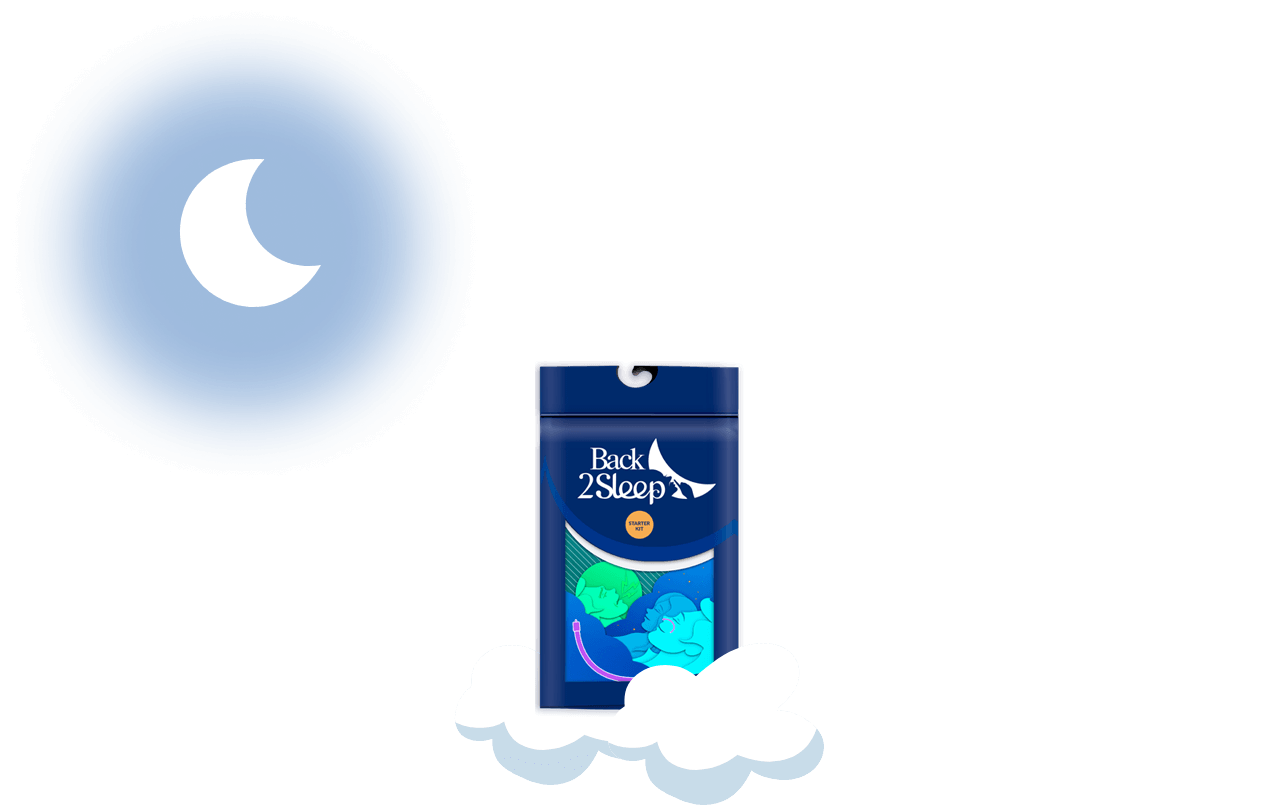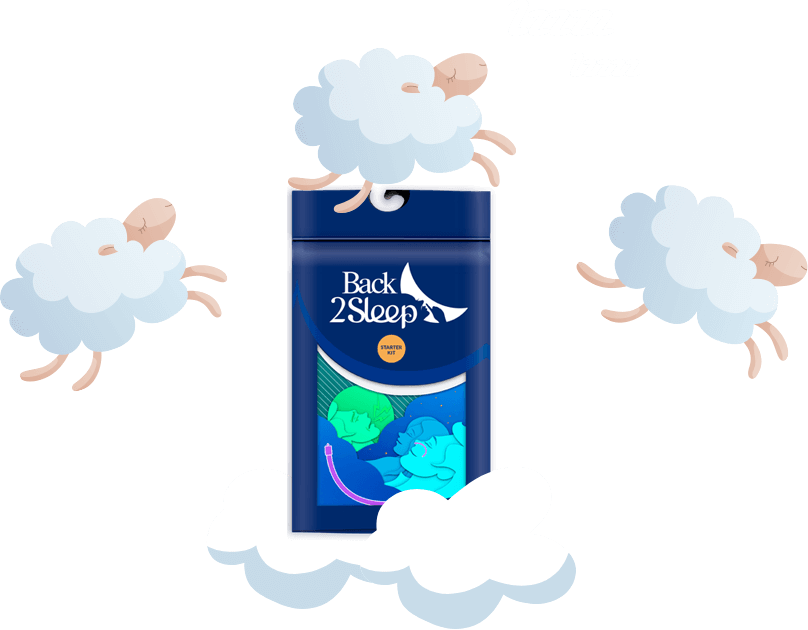Night Terrors: Understanding Causes, Mechanisms and Effective Treatment
Discover the science behind these frightening episodes and evidence-based solutions for children and adults
Night terrors are disturbing episodes of restless sleep occurring during deep slow-wave sleep phases, typically striking during the first half of the night when consciousness becomes trapped between sleep and wakefulness. Unlike nightmares that happen during REM sleep and leave vivid memories, night terrors manifest as sudden, intense panic with uncontrollable screaming, violent body movements, profuse sweating, and rapid gasping breathing—yet the person experiencing them has no recollection upon awakening. While affecting approximately 30-40% of children between ages 3-7 years, only 2.2% of adults experience these terrifying episodes, often linked to underlying sleep disorders such as obstructive sleep apnea or psychological conditions like PTSD. Understanding the neurological mechanisms, identifying triggers, and implementing effective treatment strategies can dramatically reduce or eliminate these frightening nocturnal events.
During a night terror, the sleeper appears extremely agitated and frightened—shouting, crying, sweating profusely, and breathing rapidly. Their eyes may be wide open, yet they remain completely unresponsive to external stimuli. This intense state of panic typically lasts between 30 seconds to 5 minutes (though some episodes can extend to 90 minutes) before rapid return to sleep. The person retains no memory of the event when morning arrives, distinguishing night terrors from ordinary bad dreams.

Recognizing Night Terror Symptoms: A Complete Guide
Night terrors present with a distinctive constellation of symptoms that distinguish them from nightmares and other sleep disturbances. Recognition of these characteristic signs allows parents, partners, and caregivers to respond appropriately during episodes.
🗣️ Uncontrollable Screaming
The person shrieks or cries intensely and suddenly, often with a piercing scream at the beginning. These noisy manifestations are the hallmark of night terrors, typically occurring without apparent trigger or warning.
💥 Extreme Physical Agitation
The sleeper agitates violently, struggles, gesticulates, and appears to fight against something invisible. Movements are uncoordinated and uncontrolled—thrashing limbs, punching, or attempting to flee perceived threats.
💧 Autonomic Activation
Profuse sweating, rapid heart rate (tachycardia), gasping accelerated breathing, and dilated pupils characterize the intense autonomic nervous system activation during episodes.
👁️ Unresponsive Stare
Eyes wide open with a glassy, fixed stare—yet completely disconnected from reality. The person does not react to voices, touch, or attempts at comfort and appears trapped in an alternate state.
Additional Characteristic Features

What Causes Night Terrors in Children and Adults?
The exact etiology of night terrors remains incompletely understood, though researchers have identified multiple contributing factors. Developmental, environmental, organic, psychological, and genetic elements interact to create vulnerability to these episodes. The causes differ significantly between children and adults, requiring distinct approaches to understanding and treatment.
Neurological Mechanism: Night terrors occur when consciousness becomes stuck between deep stages of sleep and wakefulness. During this transitional arousal state from stages 3-4 of non-REM (slow-wave) sleep, the brain partially awakens while the body remains deeply asleep—creating the characteristic terror response without conscious awareness or memory formation.
Primary Causes in Children
| Cause | Mechanism | Prevalence/Impact |
|---|---|---|
| Genetic Predisposition | Strong familial risk with 10-fold increase in first-degree relatives. HLA DQB1*04 and DQB1*05:01 alleles show high prevalence (40.8% vs 24.2% in general population) | 96% of patients have family member with night terrors or sleepwalking |
| Developmental Factors | Central nervous system maturation processes; peak occurs during brain development phases ages 3-7 years | Most children outgrow by adolescence as brain maturation completes |
| Sleep Deprivation | Insufficient sleep increases time spent in deep slow-wave sleep (rebound effect), elevating night terror probability | Consistent finding across multiple studies as major trigger |
| Fever & Illness | Elevated body temperature increases proportion of deep sleep stages where terrors occur | Common precipitating factor in young children |
| Underlying Sleep Disorders | Obstructive sleep apnea, restless legs syndrome create sleep fragmentation and disrupted arousal patterns | Treating underlying disorder often resolves night terrors |
Causes Specific to Adults
Additional Contributing Factors:
- ✓ Intense physical activity before bedtime (over-arousal)
- ✓ Constricted nasal passages and breathing difficulties
- ✓ Gastroesophageal reflux disease (GERD)
- ✓ Nocturnal asthma exacerbations
- ✓ Central nervous system medications
- ✓ Hypoglycemia (low blood sugar)
- ✓ Celiac disease (emerging evidence)
- ✓ Narcolepsy (special consideration required)

The Neurological Mechanism: Why Night Terrors Happen
Understanding how night terrors occur at the neurological level provides insight into why these episodes differ so dramatically from ordinary nightmares and why affected individuals have no memory of events.
Deep Sleep Entry
Individual enters stages 3-4 of non-REM sleep (slow-wave sleep) during first third of night—the deepest sleep phases critical for physical restoration
Incomplete Arousal
Brain attempts to transition from deep sleep to lighter stage or wakefulness but becomes "stuck"—consciousness trapped between sleep states
Autonomic Activation
Brainstem arousal systems activate without cortical consciousness engaging—triggering panic response, motor activity, and sympathetic nervous system activation
No Memory Formation
Hippocampus and memory consolidation centers remain offline—explaining complete amnesia upon true awakening minutes later
Sleep Architecture Explanation: Sleep progresses through cyclical stages:
- ✓ Stage 1 NREM: Light sleep, easy to wake
- ✓ Stage 2 NREM: Slightly deeper, body temperature drops
- ✓ Stage 3-4 NREM: Deep slow-wave sleep (delta sleep)—physical restoration occurs
- ✓ REM Sleep: Rapid eye movement, dreaming, memory consolidation
Night terrors occur during incomplete arousal from stages 3-4 NREM, while nightmares happen during REM sleep—explaining why terrors involve no memory but nightmares can be recalled.
Biochemical Factors
While no consistent biochemical or structural brain abnormality has been definitively identified, serotonin levels or precursor availability may play a role. This explains why selective serotonin reuptake inhibitors (SSRIs) often prove effective in treating persistent night terrors. Research suggests neurotransmitter imbalances during developmental periods or stress may contribute to arousal dysregulation.
Consequences and Impact of Night Terrors
While night terrors themselves don't directly cause physical harm, their secondary effects significantly impact quality of life for both the individual experiencing them and family members sharing the household.
| Consequence | Impact | Affected Population |
|---|---|---|
| Disrupted Sleep Quality | Abrupt interruption of deep restorative sleep leads to chronic fatigue, concentration difficulties, reduced alertness next day | Primary sufferer |
| Daytime Fatigue | Excessive sleepiness during daytime hours impairs academic/work performance; increases accident risk | Primarily children and adults with frequent episodes |
| Mood Disturbances | Sleep deprivation causes irritability, anxiety, depressive symptoms; behavior and emotional regulation affected | All ages, especially children |
| Relationship Strain | Shouting, restlessness, sleep disruption for partners/family creates tension; long-term damage to interpersonal relationships | Adults, family members, bed partners |
| Physical Injury Risk | Thrashing, falling from bed, running into objects while unconscious; bruises, lacerations, fractures possible | Adults more injury-prone than children |
| Embarrassment & Stigma | Social anxiety about sleepovers, travel, cohabitation; adults experience relationship difficulties and shame | Older children, adolescents, adults |
| Secondary Sleep Disorders | Anxiety about episodes creates bedtime fear, sleep onset difficulties, chronic insomnia | Primarily adults with persistent terrors |
Emotional Impact on Children (Ages 4-5): Longitudinal research reveals that higher frequency of night terrors in toddlerhood (12-36 months) associates with increased emotional-behavioral problems at preschool age, specifically:
- ✓ Internalizing problems (anxiety, depression)
- ✓ Emotionally reactive behaviors
- ✓ Somatic complaints
- ✓ Night terrors may represent early warning sign requiring intervention

Real Experiences: Families Share Their Night Terror Stories
"Our 5-year-old daughter experienced night terrors 3-4 times per week for months. After addressing her undiagnosed sleep apnea with the Back2Sleep device and establishing better sleep hygiene, episodes reduced to maybe once per month. Life-changing for our whole family."
"At 35 years old, I started experiencing night terrors for the first time—linked to PTSD from a traumatic event. Cognitive behavioral therapy combined with clonazepam for 3 months eliminated them completely. Now I manage stress better and sleep peacefully."
"My son's night terrors were terrifying to witness. Learning NOT to wake him and simply ensuring his safety made such a difference. They naturally resolved by age 11 as his sleep specialist predicted. Patience and understanding were key."
"The scheduled awakening technique worked miracles. Waking our daughter 15 minutes before the typical terror time, keeping her awake for 5 minutes—episodes stopped within a week. Simple but incredibly effective."
Evidence-Based Treatment and Management Strategies
Treatment approaches for night terrors depend on frequency, severity, age of the individual, and underlying contributing factors. Most childhood cases require only reassurance and safety measures, as the condition typically resolves spontaneously by adolescence. However, frequent or severe episodes—or adult-onset terrors—warrant more active intervention.
Non-Pharmacological Interventions (First-Line)
Pharmacological Treatment (When Necessary)
| Medication | Mechanism | Efficacy & Considerations |
|---|---|---|
| Benzodiazepines (Clonazepam) | Inhibit stages 3-4 slow-wave sleep where terrors occur; suppress deep NREM sleep | Effective short-term but risk of addiction and rebound symptoms upon cessation. Use requires careful monitoring and gradual tapering |
| SSRIs (Paroxetine, others) | Increase serotonin availability; modulate sleep architecture and arousal patterns | Often preferred over benzodiazepines for long-term use. Case studies show improvement in both sleep quality and anxiety levels |
| Tricyclic Antidepressants (Imipramine) | Suppress REM sleep and modulate neurotransmitter systems | Alternative when SSRIs ineffective. More side effects but can be highly effective for severe cases |
Important Treatment Principles:
- ✓ Medical treatment rarely necessary for infrequent episodes (few per year)
- ✓ Consult healthcare provider if episodes frequent (multiple times weekly) or cause significant distress/impairment
- ✓ Polysomnography (sleep study) or EEG may be ordered to rule out epilepsy or other conditions
- ✓ Children typically require only reassurance and safety measures—spontaneous resolution expected
- ✓ Adults require thorough evaluation for psychiatric disorders, medication effects, substance use
- ✓ Treat underlying sleep disorders (OSA, RLS) as primary intervention
The Back2Sleep Solution for Sleep Apnea Connection
Research demonstrates strong links between obstructive sleep apnea and night terrors. Sleep apnea causes breathing interruptions that fragment sleep architecture and create abnormal arousal patterns—precisely the conditions that trigger terror episodes.
The Back2Sleep intranasal orthosis maintains open airways during sleep by gently supporting nasal passages. This CE-certified medical device:

Night Terrors vs. Nightmares: Critical Differences
Many people confuse night terrors with nightmares, but these represent fundamentally different phenomena occurring during distinct sleep stages with completely different characteristics.
| Characteristic | Night Terrors | Nightmares |
|---|---|---|
| Sleep Stage | Stages 3-4 NREM (deep slow-wave sleep) | REM sleep (dream stage) |
| Timing | First third of night (30 min - 3.5 hours after sleep onset) | Second half of night when REM periods lengthen |
| Memory | Complete amnesia—no recollection upon awakening | Vivid memory of dream content, storyline, emotions |
| Motor Activity | Extreme—thrashing, screaming, fleeing, violent movements | Minimal—usually remain still in bed |
| Responsiveness | Unresponsive to comfort, conversation, attempts to wake | Easily awakened and consoled; responsive to others |
| Upon Waking | Confused, disoriented if awakened during episode | Alert, oriented, can describe dream clearly |
| Autonomic Signs | Intense—profuse sweating, rapid heart rate, dilated pupils | Mild to moderate—some anxiety-related symptoms |
| Prevalence | 30-40% children, 2.2% adults | Very common at all ages |
| Duration | 30 seconds to 90 minutes | 5-20 minutes typically |
What to Do During a Night Terror Episode
Witnessing a night terror can be extremely distressing for parents, partners, and caregivers. Knowing how to respond appropriately prevents injury and avoids prolonging or intensifying the episode.
DO NOT Wake Them
Attempting to wake the person often increases agitation and confusion. Wait it out—episodes resolve spontaneously
Ensure Safety
Clear path of obstacles, guide gently if attempting to leave room, prevent falls or collisions with furniture
Stay Calm
Speak softly and soothingly from a distance. Your calm presence provides subconscious reassurance even if unresponsive
Document & Assess
Note timing, duration, frequency, potential triggers to identify patterns and discuss with healthcare provider
CRITICAL DON'Ts:
- ✗ Never shake or yell at the person—this increases confusion and distress
- ✗ Don't restrain or hold tightly—may trigger fight response and cause injury
- ✗ Avoid bright lights or loud noises—can worsen agitation
- ✗ Don't discuss the episode in morning—they have no memory and may feel embarrassed
- ✗ Never punish or express anger—night terrors are involuntary, not behavioral issues

When to Consult a Healthcare Provider
While occasional night terrors rarely require medical intervention, certain situations warrant professional evaluation to rule out underlying conditions and explore treatment options.
Seek Medical Consultation If:
- ✓ Episodes occur frequently (several times per week or nightly)
- ✓ Terrors persist beyond age 12 or develop for first time in adulthood
- ✓ Episodes result in injury to the person or bed partner
- ✓ Significant daytime sleepiness, fatigue, or behavioral changes develop
- ✓ Academic/work performance declines due to sleep disruption
- ✓ Episodes significantly disrupt household or cause family distress
- ✓ Symptoms of other sleep disorders present (snoring, gasping, restless legs)
- ✓ Psychiatric symptoms accompany terrors (anxiety, depression, PTSD)
- ✓ Parent/partner concern about episode severity or characteristics
Healthcare providers may recommend:
Frequently Asked Questions About Night Terrors
What should I do during a night terror?
Do NOT attempt to wake the person—this increases agitation. Stay calm, ensure safety by removing obstacles and preventing falls, speak softly and soothingly, and wait for spontaneous resolution (typically 30 seconds to 5 minutes). Reassure with gentle words even though they appear unresponsive.
When should I consult a doctor about night terrors?
Medical consultation is recommended if episodes are frequent (several times weekly), persist beyond age 12, cause injury, lead to significant daytime impairment, or develop suddenly in adulthood. Adults with new-onset night terrors should always seek evaluation as this may indicate underlying psychiatric or neurological conditions.
Are night terrors genetic?
Yes. There's a strong genetic predisposition—96% of patients have family members with night terrors or sleepwalking. First-degree relatives show 10-fold increased risk. Specific HLA genetic alleles (DQB1*04 and DQB1*05:01) appear more prevalent in affected individuals, though inheritance pattern remains incompletely understood.
Will my child outgrow night terrors?
Yes, in most cases. Approximately 30-40% of children experience night terrors, typically between ages 3-7 years (peak at 5-7). The vast majority spontaneously resolve by adolescence as brain maturation completes. Only 2.2% of adults continue experiencing episodes, often related to underlying conditions.
How are night terrors different from nightmares?
Night terrors occur during deep NREM sleep (stages 3-4) in the first third of night, involve extreme motor activity and autonomic activation, and leave no memory. Nightmares happen during REM sleep later in night, involve vivid dream recall, minimal movement, and full responsiveness upon awakening. They represent completely different phenomena.
Can sleep apnea cause night terrors?
Yes. Obstructive sleep apnea creates sleep fragmentation and abnormal arousal patterns that trigger night terrors in susceptible individuals. Treating underlying sleep apnea—with CPAP, oral appliances, or devices like Back2Sleep nasal orthosis—often resolves night terror episodes completely.
What is the scheduled awakening technique?
A highly effective non-pharmacological intervention: note timing of typical terror episodes, wake the child 15 minutes before expected time, keep fully awake for 5 minutes, allow return to sleep. Repeat nightly. Episodes often cease within one week, with intervention discontinued once terrors stop.
Are medications necessary for night terrors?
Rarely. Most cases—especially in children—require only reassurance, safety measures, and good sleep hygiene. Medications (benzodiazepines, SSRIs, tricyclic antidepressants) reserved for frequent severe episodes causing significant impairment or distress. Always try non-pharmacological interventions first.
Final Thoughts: Understanding and Managing Night Terrors
Night terrors represent a fascinating but distressing parasomnia occurring when consciousness becomes trapped between deep sleep and wakefulness. While these episodes appear terrifying to witness—with screaming, thrashing, and profound agitation—understanding the neurological mechanisms, recognizing characteristic symptoms, and implementing evidence-based management strategies dramatically reduce their frequency and impact.
For the 30-40% of children who experience these episodes between ages 3-7 years, reassurance becomes paramount: night terrors represent a normal developmental phenomenon that spontaneously resolves by adolescence in the vast majority of cases. Simple interventions—scheduled awakening, sleep hygiene optimization, safety measures—often prove sufficient.
In adults, where prevalence drops to 2.2%, night terrors more commonly signal underlying conditions requiring attention: obstructive sleep apnea, psychiatric disorders, medication effects, or unresolved trauma. Comprehensive evaluation and targeted treatment of root causes typically eliminates episodes.
Key Takeaways:
- ✓ Night terrors differ fundamentally from nightmares—occurring during deep NREM sleep with complete amnesia
- ✓ Strong genetic component—10-fold increased risk in first-degree relatives
- ✓ Most childhood cases resolve spontaneously by adolescence without intervention
- ✓ Scheduled awakening technique highly effective—often eliminates episodes within one week
- ✓ Treating underlying sleep apnea frequently resolves night terrors completely
- ✓ Adult-onset requires evaluation for psychiatric conditions, sleep disorders, medications
- ✓ Safety measures critical—prevent injury during unconscious motor activity
- ✓ Never wake during episode—increases confusion and prolongs agitation
If night terrors disrupt your household, cause distress, or occur frequently, don't hesitate to seek professional guidance. Whether addressing underlying sleep apnea with innovative solutions like Back2Sleep, implementing behavioral interventions, or exploring pharmacological options when necessary—effective treatments exist to restore peaceful nights for your entire family.
Ready to Reclaim Peaceful Sleep?
If sleep apnea contributes to night terrors, discover how Back2Sleep's innovative nasal orthosis can help—discreet, effective, and designed for natural breathing.
Additional Resources:








